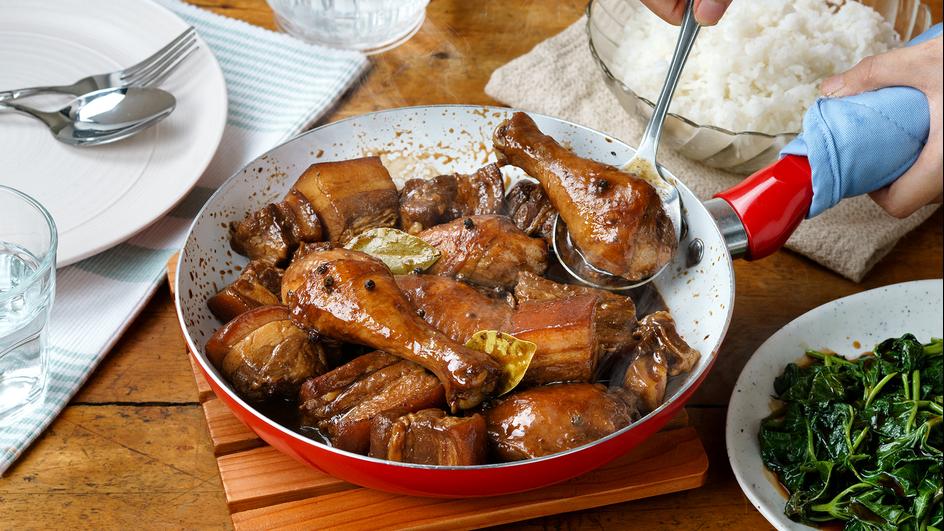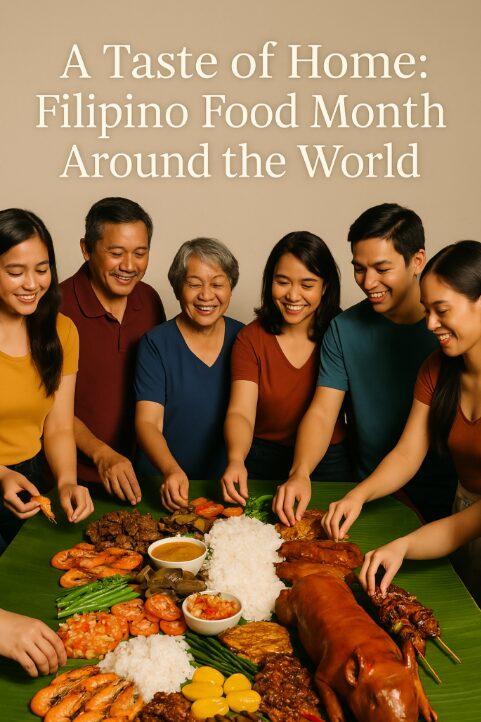
IS there such a thing as Filipino cuisine?
In the U.S., whenever a Pinoy reception is held, one can expect to be served pancit, lumpiang shanghai, fried chicken and adobo. The combination has become so predictable that non-Pinoys are of the impression that these are our national dishes.
In fact, these are simply variations on Chinese, Spanish and American dishes. I guess among the four, the closest to being a national dish is the adobo.
Yet, one could take the adobo for granted, until you find yourself in my shoes, far from home and home-cooked meals.
This happened to me on my first trip to the U.S. to attend an Advertising Age creative workshop in Chicago.
I swear, I thought I would starve to death. I simply could not eat the hotel food being served to us. It was too bland and flat, virtually tasteless. On the third day, I managed to find a Chinese restaurant off Michigan Avenue. But I couldn’t stand the taste of the food, either – too bland, obviously intended for non-Asian diners.
Was this “American food”? Desperate, I told myself “Ibalik niyo ako sa Pilipinas!”
At any rate, after that first encounter with American victuals, I began to understand the urgency with which Christopher Columbus set out to look for the spice islands. I guess, he and his patrons also couldn’t stand the bland, flat taste of their cuisine.
After my ordeal in Chicago, I proceeded to New York, still famished. I desperately scanned the phone books for familiar names and, by a stroke of luck, I found the name of Celina Obregon, a former Manila ad agency co-worker. When I finally got her on the phone, I begged her to invite me to her apartment and feed me Pinoy food. She said she would cook adobo.
AAAh-dobo!!
Nothing ever tasted more glorious to a starving Pinoy than Celina’s adobo. It was at that point that I learned to appreciate Filipino cuisine. But that was just the beginning.
A decade later, my family and I moved to the U.S. We first settled down in Cambridge, Maryland, a small town on the Eastern shore of the Chesapeake.
While rich in blue crabs and oysters, Cambridge did not have the familiar food items and condiments that we had known all our lives, and the only kind of vinegar available at the supermarket was made from apple cider. No sukang Paombong!!
Adobo cooked in apple cider vinegar lacks the kick – the delectable sourness of genuine Pinoy suka!
We had to drive over 60 miles to Dover, Delaware to find an Asian store – and even then, there was no genuine Pinoy vinegar available.
It wasn’t until we took a trip to New York that we finally found Pinoy comfort foods in Fil-Am stores. And in Queens, we ate genuine Pinoy cuisine in a turo-turo. And, yes, delicious adobo cooked with real Pinoy condiments!
These days, thank heavens, there are Seafood City supermarkets all over California, Las Vegas, Chicago, Seattle and Hawaii and even in Canada (two in the Ontario area), plus Edmonton, Calgary and Winnipeg. There you can buy everything you need for authentic Pinoy dishes: fresh seafood, plus daing, tuyo and bagoong, produce and other gulay for pinakbet, and meat cuts with the fat left on the liempo.
Now comes the Department of Trade launching a project to “standardize” Filipino cooking – in other words, to guarantee lasang Pinoy, particularly in the preparation of traditional Filipino cuisine, such as sinigang, lechon, sisig and, siempre, adobo. The usual cynics have accused DTI of wasting scarce government resources on such an “insignificant” undertaking.
Insignificant? Try the taste of adobo marinated with apple cider or sinigang with ersatz sampaloc (the Filipino chef of a cruise ship tried this in an effort to please us Pinoy passengers – but in vain).
At any rate, to kick off the “standardization” process, a committee has begun to focus on the adobo as the “Filipino national dish.”
Of course, like many things that we Pinoys claim to be our own the term adobo isn’t really one hundred per cent Filipino, just like our Miss Universe beauty contest winners who are invariably mestiza Caucasian. There are marinated meat dishes called adobo in Spain and countries in South America.
But who cares?
Like China claiming most of the South China Sea, based on an old map, why shouldn’t we claim adobo as our very own? “Traditional American” favorites like hotdog and hamburger are not indigenous to the U.S. either but originated in Frankfurt (hotdogs are also called frankfurters) and Hamburg in Germany.
Adobo was used by the Spanish conquistadores to describe a cooking method among the natives of Las Islas Filipinas that used vinegar and tasted pretty much like Spanish marinated meat.
But how do you “standardize” a dish that comes in so many variations? Noting the wide variety in the ingredients and cooking methods used for adobo, the DTI said that the standard will identify the common elements that define the “basic” Philippine adobo.
According to Chef Myrna Segismundo of the Food Writers Association of the Philippines, “There will be different approaches and opinions (on cooking Philippine adobo). As long as I have, say one to three steps, it’s this recipe. Anything else you add to it is a variation to the cooking technique.”
Another chef, Raoul Goco, says, “Adobo is not a recipe. It is a cooking technique.” He adds that there are a great number of adobo recipes around the country “ranging from those with laurel, pepper, soy sauce, vinegar, coconut.
My wife prepares the dish in many different ways: predominantly with vinegar or mainly with soy sauce, or with coconut milk (adobo sa gata) or allowed to simmer until the fat has melted, leaving meat that’s almost as crispy as chicharon.
A committee, made up of representatives from restaurant and food industry groups, the Department of Science and Technology, and the National Commission for Culture and Arts, will set the standards for adobo and other Filipino cuisine.
The DTI Bureau of Philippine Standards Director Neil P. Catajay said that developing Filipino dish standards will create a “distinguished Filipino food culture while establishing the common ground for food businesses.”
“Standardizing the basic cooking technique for Philippine adobo will help ordinary citizens, foodies, and food businesses determine and maintain the authentic Filipino adobo taste,” he said. The draft of the standards will be circulated nationwide for review by stakeholders.
There is, of course, no truth to the social media rumor that if you don’t cook adobo according to “standards” you will be shot at the Luneta.
According to the DTI, “Philippine National Standards are product characteristics and production guidelines, but compliance is not mandatory.”
In other words, you are at liberty to suffer adobo cooked in apple cider.
Ugh!!
* * *
gregmacabenta@gmail.com
* * *
The opinions, beliefs and viewpoints expressed by the author do not necessarily reflect the opinions, beliefs and viewpoints of the Asian Journal, its management, editorial board and staff.






